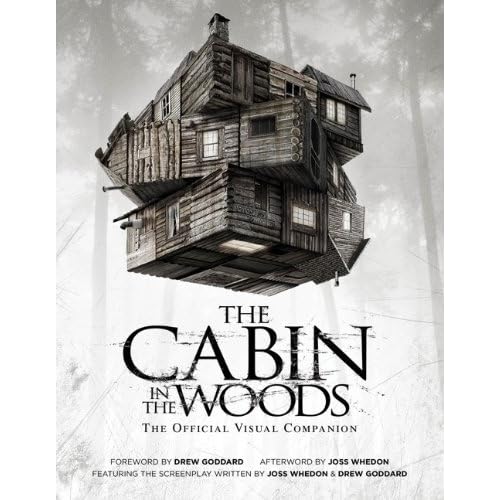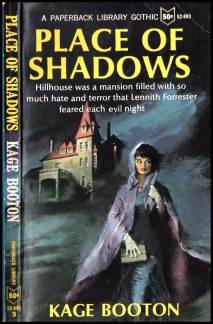What I Forgot About Dracula
by Jason Henderson
Dracula has been on my mind recently and I've been reading "Dracula," the Stoker novel, again.... Dracula has always been a fascinating character for me, and it's strange to occasionally revisit the Victorian-- oh, so very Victorian-- novel of the Count's origin. Better and better-read writers than I have analyzed the book in detail and I won't challenge their accomplishments here-- as a Lit layman, I never could. Instead I wanted to write as a layman who thought he remembered a lot about "Dracula"-- and didn't.
THE NON-PLACE OF TRANSYLVANIA IN THE NOVEL
In the book, lawyer Harker goes on a long and creepy journey to visit Count Dracula, a "Szekely" nobleman from Transylvania. The trip he makes is straight out of fable-- the carriage seems to criss-cross back over ground it had already covered and by the time Harker arrives at the castle he is in no real place but a non-place, like the non-place of Coleridge's Ancient Mariner. Which is just as well, because it's clear to me that Bram Stoker really didn't care whether people would be avidly looking up Transylvania and cross-referencing it with Dracula. Stoker makes assertions that serve his novel but not scholarship-- he has Van Helsing insist that this Dracula must be "that old Voivode Dracula" of Transylvania. The assertion has continued forever-- Frank Langella in the 1979 DRACULA says, "I am a Szekel," a Transylvanian-- and Coppola's DRACULA also repeats the idea that Vlad the Impaler ruled Transylvania.
Dracula the Transylvanian exists in the novel only. Prince Dracula, Vlad IV, ruled Wallachia, which like Transylvania was a neighboring province of Rumania. Dracula's ethnicity was Wallach, and his fights with the Turks happened in Wallachia. This matters because it's like writing a story about Mussolini coming back to life and saying he was from France, and then having every work thereafter talk about "that wicked Frenchman, Mussolini."
(Before we get really geeky, let me hasten to acknowledge that Dracula was in fact born in Transylvania. Likewise, Che Guevara the Cuban revolutionary was born in Argentina. History is nothing if not full of complicated detail.) But then, but then--in the novel, Transylvania is a non-place. Transylvania is not-England, and that's good enough.
THE CHILD-BRAIN OF DRACULA
There's a fascinating speech by Van Helsing in Chapter 23 in which the doctor says Dracula has a "child-brain" as far as his powers are concerned, and that Dracula is teasing out his abilities, growing more confident and more powerful. It's strange that Dracula would have waited the 400 years between his assassination and the novel's events to start boning up, but it's a wonderful notion-- Dracula's powers can evolve. They do so in the novel; Dracula gets younger and seems to improve in being able to move around as mist. I love this idea, that Dracula by 2003 would be powered up a great deal more than he is at the novel's end, when if we are to believe the entry, he is slain by a Bowie knife. I find, in fact, that my own child-brain is now clouded with years of movies and analysis that suggest a myriad of possibilities for why Stoker allowed Dracula to die by knife when one would presume a big stake through the heart would have been the right choice. Fred Saberhagen famously suggested, as have others, that he doesn't die at the end, but instead disappears and lets the good guys think he died. Sure, why not.
THE COMPLETE CO-INCIDENCE OF DRACULA'S ATTACK ON LUCY AND MINA
It's funny how much our familiarity with movies influences what we remember of a book. But there it is: in the novel, here's what happens:
- Harker visits Dracula to give him papers regarding the house Dracula is to buy in London.
- Dracula takes Harker captive and sics weird vampire women on him, and leaves Harker there.
- Dracula goes to England to move into his new place, and starts dining on two local women -- both of whom are connected to Harker.
- The rest of the novel happens.
So when Harker finally escapes and gets back to England, he's able to provide crucial details about Dracula
Soooo: why does Dracula happen to attack only people actuallyconnected to the guy he left chained up back at the castle? How is it that Dracula's whole clever plan falls apart because he only manages to run into people who know one another? Heck if anybody knows; it seems to be a complete co-incidence, or perhaps the foresight of God placing the tools of Dracula's destruction in his path. Which is a very Victorian novel idea. But it's the sort of co-incidence that bugs the heck out of screenwriters, hence was born the romance gambit.
Different stage and screen versions have dealt with the problem in various ways, some of which seem to seep into people's memory. The play on which the 1931 and 1979 Universal Draculas were based simply collapses everyone into one household, and Dracula winds up there and meets everyone at once. The 1973 Richard Matheson script posits that Dracula saw Jonathan Harker's picture of Lucy, Harker's fiancee Mina's friend, and thought Lucy was the re-incarnation of Dracula's dead bride. Thus he goes looking for Lucy having seen her picture. The 1992 Coppola film employs Matheson's "re-incarnation obsession" device as well (giving no credit to Matheson) because it seems to work, although Coppola switches the object of Dracula's obsession to Mina, which makes sense organizationally because Mina is the last victim. But Dracula's attack on Mina in the novel has been strangely remembered.
THE WHOLE DRACULA/MINA THING
You'll recall in Coppola that this is the moment when the panting Mina says, "Take me awaaay from all this deathhhh." Or something. In Chapter 21 of the book, Mina awakens to find Dracula leaning over her, having knocked husband Jonathan Harker unconscious. Dracula says, "Silence! If you make a sound I shall take him and dash his brains out before your very eyes." He reveals he has attacked her before, explaining the lethargy she's been feeling, and as he bends towards her Mina tells us, in perhaps her most oft-quoted line, "I was bewildered, and strangely enough, I did not want to hinder him." Did not want to hinder him. Modern readers have assumed that Mina's deeper, lustier, more fully sexualized self is attracted to Dracula, but remember, this is Stoker's Dracula, rank of breath, hair on palms, and all. Here's a fun party question: If Dracula put a spell on Mina is she still legitimately attracted to him? What does it mean to be under someone's spell? Isn't that a good thing? Heck if I know. But I do know that Dracula just threatened to crush Mina's husband's head until his brain leaks out unless she keeps her yap shut, which seems somehow less charming than Coppola's film would suggest.
There's more-- this relationship which so many people call "central" to the novel has so many angles we forget. Remember the wonderful 1979 Langella Dracula, who tells the Mina character (there called Lucy, because that movie swaps the names), "Now it is you, my best beloved one." People love this idea of the "best beloved one" of Dracula, or rather imagining what sort of woman would rise to the rank of best beloved one. But whatever. In the book, Dracula doesn't say that. He says this, (italics mine) in Chapter 21:
You know now, and they know in part already, and will know in full before long, what it is to cross my path. They should have kept their energies for use closer to home. Whilst they played wits against me, against me who commanded nations, and intrigued for them, and fought for them, hundreds of years before they were born, I was countermining them. And you, their best beloved one, are now to me, flesh of my flesh, blood of my blood, kin of my kin, my bountiful wine-press for a while, and shall be later on my companion and my helper. You shall be avenged in turn, for not one of them but shall minister to your needs. But as yet you are to be punished for what you have done. You have aided in thwarting me. Now you shall come to my call. When my brain says "Come!" to you, you shall cross land or sea to do my bidding. ...Dracula goes after Mina because she's their favorite. Not his. Keen readers will point out that Dracula does suggest that later Mina might be his "companion," but no monogamy on Dracula's part is suggested. Dracula has a box of companions back home, in fact. In Chapter 3 the Count tells the three castle-bound, Harker-panting, baby-eating brides/sisters/whatever they are, "Yes, I too can love… and I shall love again," but come on. Who does this guy love? What in heaven's name would Dracula's favorite be?
DRACULA THE MANIAC
After all, this is Vlad the Impaler we're talking about, a guy who loved to impale things so much he impaled rats when he couldn't have people. Who soothed his nerves mutilating birds. A guy who sliced open a pregnant woman who accused him of being the father, who impaled infants atop their mothers, who killed thousands of his own citizens in a day, who solved his poverty problem by burning all the poor people alive in one locked building. This is the real guy I'm talking about. If a movie wishes to show us a Dracula tied to the real Dracula and the novel, are we really to imagine Mina would accept the man who -- but actually I can barely type the worst of his atrocities. History's Dracula was a monster who did massively terrible, perverse, sick things on an almost unimaginable scale, because he wanted to, and because his position and cruelty kept him long free of punishment. Dracula was not a misunderstood man, as the Coppola version, and the Badham/Langella version, and the Palance version, and on, and on, would have us believe.
And the novel suggests no such thesis. Actually, the best proof of this comes from within the novel, as Dracula feeds a baby-- a live baby-- to the three vampire women, then sics wolves on the baby's screaming, terrified mother. Dracula is a villain, albeit an attractive one, and it is irresponsible to suggest otherwise. Again, if Mina falls for Dracula, what will she say when she learns about the mother and the wolves?
It's all beside the point. Stoker made a novel with a massive character, although the character in the novel accomplishes little of what he sets out to do. (He gives up his invasion fairly quickly.) But looking over Stoker's notes tells us a great deal. Stoker worked on the novel for nearly a decade as characters came and went from the outline, subplots formed and disappeared. But one major point remained in each and every draft: the line from Chapter 3: "Back, I tell you all! This man belongs to me!" The key to Dracula, in the novel--at least to my reading, and your mileage may vary--is ownership and power. If we are attracted to this predator, it is for reasons that make far less sense-and are much harder to accept-- than most of the movies would allow.






